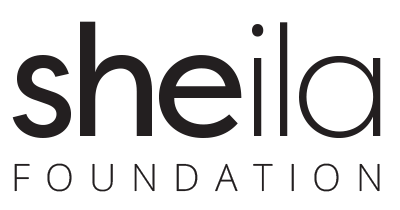Flora exhibition from the Cruthers Collection of Women’s Art.
The Cruthers Collection
The inspiration for Sheila Foundation is Lady Sheila Cruthers. Lady Sheila was the driving force behind the largest stand-alone collection of Australian women’s art – the Cruthers Collection of Women’s Art.
Sheila was a visionary who recognised the importance and value of Australian women’s art long before most, and the need to recognise women artists. She mentored and supported many emerging women artists who went on to develop significant careers including Narelle Jubelin, Susan Norrie and Julie Dowling. The Collection she built is unique in Australia and particularly important at a time when historians and the public are realising how under-represented women are in Australia’s history. To quote art historian Rex Butler, it is “a tremendous resource for the rethinking of Australian art”.
The Collection is held by the University of Western Australia and regularly exhibited at the Lawrence Wilson Art Gallery on the university campus. Visit their website for exhibition and collection information.
Sheila Cruthers buys her first women’s artwork, 'Dry grasses' 1974 by Memnuna Vila-Bogdanich.
Sheila buys her first self portraits, by Kathleen O’Connor and Elise Blumann.
The women’s art collection assembled by Sheila over 20 years is exhibited together for the first time at the Perth Institute of Contemporary Arts as part of the National Women’s Art Exhibition. "In the Company of Women 100 years of Australian women’s art from the Cruthers Collection" comprises 164 artworks by 79 artists. The collection is named the Cruthers Collection of Women’s Art.
Sheila Cruthers (1925 - 2011)
"I must have been one of the first feminists around because I was buying women’s art when no one else wanted it. People wanted men. They wanted Nolan, Drysdale or Boyd. They didn’t necessarily want Kate O’Connor. She was not well known then, nor was Elise Blumann. And I found I was drawn to them for a number of reasons, so I just kept buying them."
Sheila Cruthers interviewed by Sue John, TVW 7, February 1995.
The Cruthers family decides to keep the Collection together and available to the public and begins to explore options to donate it, including to the University of Western Australia.
The 446 artworks then comprising the Cruthers Collection of Women’s Art is donated to the University of WA under a Deed of Gift dated 28 June 2007. At the same time the Cruthers Art Foundation, a family foundation, is established to support the Collection at UWA and advocate for women artists.
Chancellor Michael Chaney accepts the Collection on behalf of the University of WA at a public event. The collection will be known as the Cruthers Collection of Women’s Art at the University of WA. Laura Williams is appointed the first curator of the Collection.
Felicity Johnston is appointed the second curator of the Collection and begins an exhibition program in a dedicated space named the Lady Sheila Cruthers Gallery.
The first full scale exhibition from the Cruthers Collection is launched at the Lawrence Wilson Art Gallery. Look. Look Again comprises 125 artworks by 95 artists. The exhibition is accompanied by a collection book, Into the Light: the Cruthers Collection of Women’s Art, edited by John Cruthers and Lee Kinsella, and two day symposium on women’s art, Are We There Yet?, featuring speakers from around Australia.
Artist and blogger Elvis Richardson (The CoUNTess) approaches the CAF with a project she’s devised to gather statistics about gender parity in the 10 main sectors of the contemporary art industry for one year, 2014, to be repeated every four years to measure progress. CAF agrees to fund the 2014 count. An advisory committee is set up, chaired by Tamara Winikoff, CEO of NAVA. The first Countess Report is launched at NAVA Sydney in 2016.
Women’s art historian Dr Juliette Peers works with CAF chair John Cruthers to develop Filling the gap, a project to gather data in every state and territory on professional women artists working 1870-1960 who have dropped from the historical record. CAF agrees to fund a pilot program to gather data in NSW, enter it onto an online database and when funds permit set up a website for public access. An advisory committee is set up, chaired by Michael Rolfe of Museums & Galleries of NSW. Data reveals 434 women artists working 1870-1914, the great majority not on the public record. The data is entered in 2017 but there are insufficient funds to proceed to a website.
The board of the CAF decides to transition from a family foundation to a public foundation with the same aims but a wider spread and national range of operations.
Sheila: A Foundation for Women in Visual Arts begins operations in July 2017.
